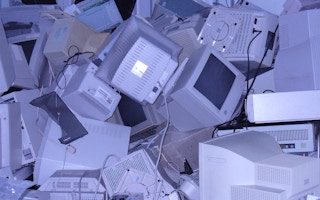Let me ask you a question. Are you periodically forced to buy a new laptop because the technology – hardware or software – in your current laptop is no longer supported even though it’s fully functional?
The Microsoft Windows operating system is estimated to power about 90 per cent of the world’s personal computers today. Newer versions of Windows appear every couple of years or so. Once that happens, many applications, such as your favourite web browser, rush to support the new version. Over a few years, these applications move away from supporting older versions to the same extent as the new one.
Google Chrome is a case in point. When it’s running on Windows Vista (a much older Windows operating system) on my laptop, it no longer receives updates from Google — that support has been removed. Microsoft has itself stopped support for Windows Vista.
Another example: I have found it very difficult to find an external hard drive – the device you use to back up your data, photographs of family and friends and songs – that works with my fully functional eight-year-old Windows Vista-based laptop.
Almost all easily available external hard disks now support some of the more recent versions of Windows. So, how can consumers like me get the required hard disk? The answer is that they probably can’t.
Product lifespan
Companies design products with an expected lifespan, and they plan technical support and product warranty accordingly. A good rule of thumb to estimate a product’s lifetime is to look at its warranty period, as it can help you guess how often its manufacturer would be launching new products.
Apple provides a one-year limited warranty and launches a new iPhone almost every year. After the initial warranty period, you need to purchase an additional warranty for extended coverage.
The warranty period is clearly not the actual expected lifetime of a product. But it does mean that if you don’t care for your device, you will be paying extra money for additional coverage in the best case scenario, or buying a new and more expensive device in the worst.
“
A lot of the technological evolution in consumer electronics market today is not trying to solve a pressing need. Rather, it’s trying to fulfil desires, not all of which are innately human.
After a few years, even your caring attitude will inevitably reach a point of diminishing returns because no matter how functional the hardware is, the software technology driving it evolves much faster.
Reduced choice
New products are seen as new choices but, unless you have the financial means, you actually have fewer choices.
Using your older device constrains you because of the limited support for its hardware and software. And what happens when your old device runs into issues, even if they are minor ones? Since there’s no more support available for the hardware or the software, your options are to upgrade, or look for people with the skills to repair it.
An upgrade can be expensive and the people with the necessary skills may simply not exist. Technical repair skills have sadly been on the decline.
This is not just the case in the consumer electronics industry, where the US Bureau of Labour Statistics predicts a decline of 2 per cent from 2014 to 2024 for electrical and electronics engineering technician jobs, but also in the automobile and other industries. This is a trend seen across advanced economies.
Developing countries tend to have secondhand markets and thriving repair bazaars, such as Nehru Place and Gaffar Market in New Delhi, Harco Glodok in Jakarta and 25 de Marco in Sao Paolo. You may have access to these markets, but the quality of their services is seldom guaranteed – and not all services are legal.
Effect on purchasing power
It’s one thing to have purchasing power limited by financial means and another entirely to have it curtailed because of reduced choices.
While companies may claim that user expectations change market dynamics, it’s also true that many companies make tireless efforts through advertisements and promotions to influence user expectations. Some actually try to set user expectations.
The latter is typified in the idea that “customers don’t know what they want”, which is eschewed by many because of Steve Jobs. The goal of this idea is essentially to manoeuvre customers to satisfy a company’s goals.
When a large customer base moves towards a particular set of products, a company need not continue offering support for pre-existing products. Many people may not need the new product, but they sell in the name of technological ‘evolution’ even when this evolution is nothing more than feature enhancement.
Contribution to e-waste
In countries where a service provider also sells consumer devices on contract, reduced choices may not be apparent. Take for example, smart phones such as Apple’s iPhone, which are sold by mobile carriers. With the launch of every new iPhone, customers may have the option to upgrade to the latest device at a cost. Many see this as an opportunity to get a new device every few years.
Some of the devices discarded as a result may find their way through vendor buyback programs, others may be recycled or refurbished versions in certain markets – but mostly without any warranty. Many others still, though, find their way to a landfill and thus contribute to electronic waste.
Even if we give consumers the choice to not contribute to e-waste or delay it as much as possible, will they be likely to exercise it? Probably not, given the rate of technological evolution. Devices discarded because of a lack of technical support (like my laptop) are likely to find their way to landfills.
A lot of the technological evolution in consumer electronics market today is not trying to solve a pressing need. Rather, it’s trying to fulfil desires, not all of which are innately human. And, in the process, it is reducing the choices we have.
![]()
Sharad Sinha is Research Scientist in Computer Science and Engineering at Nanyang Technological University. This article was originally published on The Conversation.











